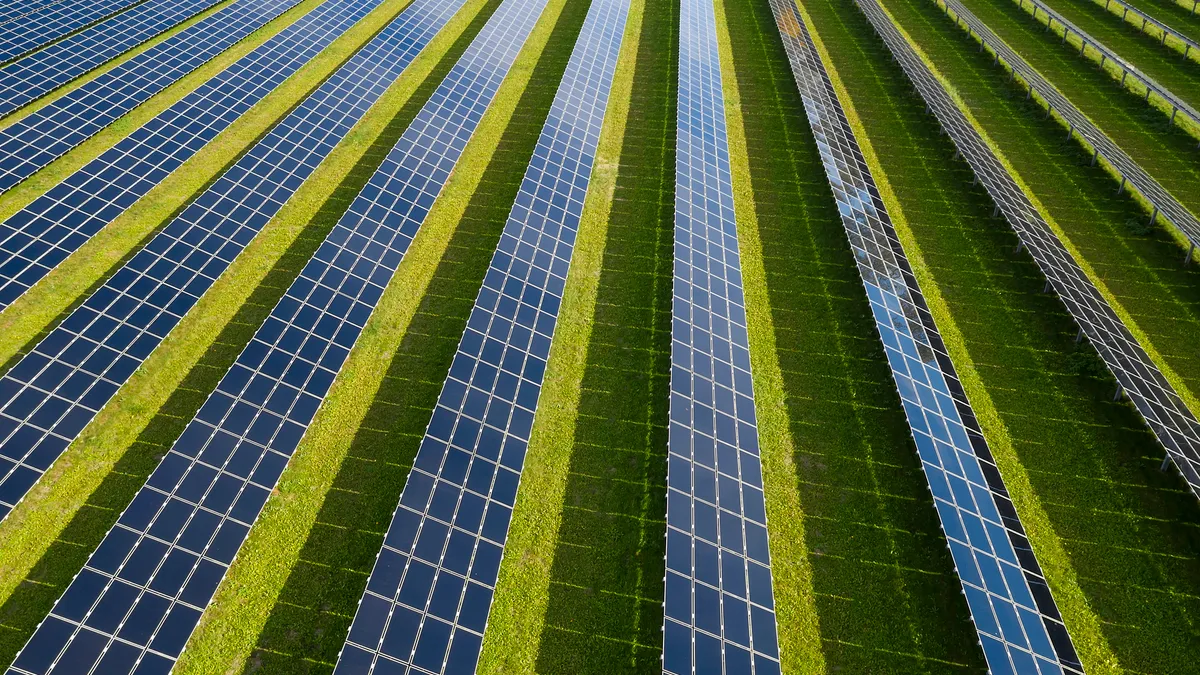David Wei is vice president of finance and operations and Raaghav Salem Karthikeyan is a corporate development MBA intern at SolarKal.
Solar has been on a tear, adding a record-breaking 32.4 GW and holding its place as the incremental market share winner in new installations in 2023. The clean energy source now accounts for 53% of all new electricity generation capacity due to both lower prices and federal incentives.
With only a few months until the 2024 presidential election, commercial real estate owners are eager to understand what’s at stake for those federal incentives under the next administration. Unfortunately, President Joe Biden and former President Donald Trump failed to shed any light on the topic of solar policy during last month’s debate, barely touching on the energy transition.
What might a change in administration mean for the Inflation Reduction Act and solar tariffs, and how could it affect solar adoption in the U.S.? Here’s what we can expect.
Trump’s stance on solar and the IRA
During his time as president, Trump was largely uninvolved with solar. He did, however, introduce a four-year, 30% tariff on imported solar modules in 2018 to encourage domestic manufacturing, which was then extended by the Biden administration.
Now on the campaign trail, Trump and his supporters have become frequent critics of aspects of the IRA. Trump has indicated that he would seek to dismantle many of the IRA’s policies and cut program budgets significantly if reelected. However, he has primarily attacked tax credits for EVs, batteries and wind farms. Tom Pyle, a Project 2025 contributor who was on Trump’s Department of Energy transition team, has also stated that the former president is not as opposed to solar energy as he is to wind projects.
Consequently, while the IRA is frequently in the headlines, only certain parts of the bill seem to be at risk under a Trump administration. For instance, Trump could hinder EV growth by rolling back pollution regulations or changing Treasury Department rules around EV tax credit eligibility, but a full repeal of the IRA seems unlikely.
Biden’s stance and a brief history on solar tariffs
Meanwhile, Biden has been a clear supporter of solar and renewables via the 2022 signing of the IRA, which pledged $369 billion in tax breaks and subsidies for promoting clean energy, reducing greenhouse gas emissions and investing in sustainable infrastructure. More recently, the Biden administration has also allowed domestic solar production to skyrocket through the implementation of tariffs.
Biden began his term by extending the Trump-era solar tariffs in 2021. The following year, however, he issued a two-year pause on new tariffs to support adoption of the clean energy source and expansion of the U.S. solar industry, aligning with the goals of the IRA. Since the pause ended in June 2024, tariffs on Chinese modules have risen to 50%. The Biden administration is also considering additional tariffs on Southeast Asian manufacturers as U.S. companies continue to compete with a flood of foreign panels in the global market.
As a result, thanks in part to the IRA and tariffs, domestic solar manufacturing capacity has grown to exceed 26 GW annually under Biden, increasing module supply and creating new jobs.
Will the IRA survive a change in administration?
To repeal the IRA completely is an uphill battle — both the House and Senate would need to expend significant political capital to roll it back. It’s also worth noting that inertia and precedent are powerful tools. The IRA has catalyzed hundreds of billions of dollars in private investments, potentially creating nearly 200,000 jobs.
Since a majority of IRA-driven investment has benefited Republican districts, unpicking the legislation would risk harming GOP constituencies. Notably, Republican states account for 58% of the projects announced under the IRA. When looking at congressional districts that have invested the most in solar since the passage of the IRA, eight of the top 10 are Republican. Although no Republicans voted for the IRA, many of its provisions have GOP support, as noted by Rep. Andrew Garbarino, R-N.Y., co-chair of the bipartisan Climate Solutions Caucus.
Without full congressional support, and given the aforementioned investment considerations, a change in administration will likely only stymie and delay certain parts of the IRA’s implementation through bureaucratic obstacles rather than guarantee a repeal.
Why now Is the time to go solar
The IRA has been wildly successful for solar so far — domestic production is skyrocketing, and installations are at an all-time high and accelerating. Moreover, IRS rules dictate that solar production tax credits would remain available for projects that start construction by 2030, reducing the risk of uncertainty for developers.
As we approach the November elections, given the uncertainty around future policy changes, now is the most opportune time to take advantage of current policies.














